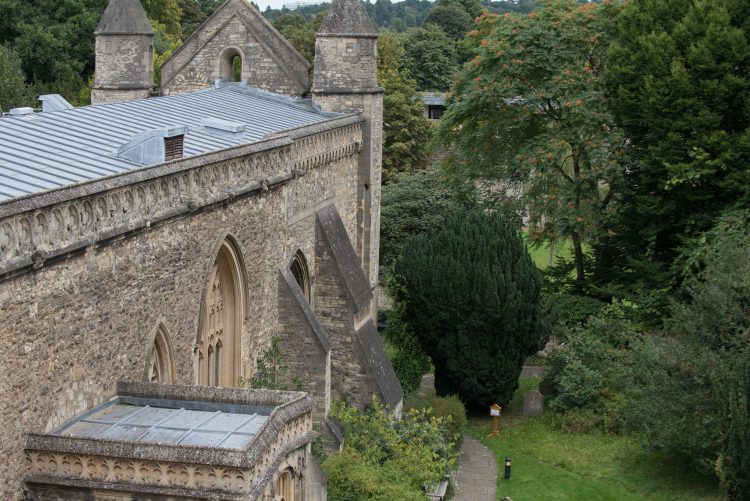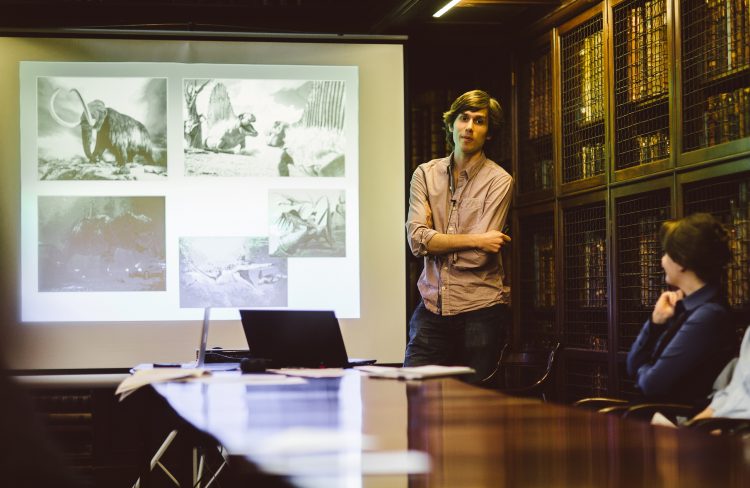Dr Benjamin Hess
Early Career Teaching and Research Fellow in Earth Sciences
Benjamin Hess is an Early Career Teaching and Research Fellow in Earth Sciences at St Edmund Hall.
Benjamin has always had a love of rocks, minerals, and nature, inspiring him to study geology for his undergraduate degree at Wheaton College, IL. During this time, he had the opportunity to investigate a glass created by a lightning strike called a fulgurite. It was found to contain rare phosphide minerals that are thought to be important for forming prebiotic biomolecules suggesting that lightning strikes may be a key source of phosphorus needed for the origins of life.
He went on to complete his PhD in Earth and Planetary Sciences at Yale University where he investigated metamorphic processes that shape Earth’s lithosphere. His research included studies of fluid flow and pulsed magmatic heating during subduction and mountain building events. He has studied rocks from all over the world and has undertaken field work in Norway and the Greek islands. On the completion of his PhD, Benjamin joined Teddy Hall as an Early Career Teaching and Research Fellow in Earth Sciences in January 2025.
Benjamin’s research focuses on how the interactions of chemistry and physics control the evolution of Earth’s rigid outer layer known as the lithosphere. His work combines field and laboratory methods with mathematical modeling to understand both how physical stresses in the Earth drive chemical reactions and how reactions in turn affect the stresses and physical evolution of the Earth. Understanding these fundamental interactions provides insight into large-scale processes ranging from geohazards such as earthquakes to planetary evolution.
Examples of his current research include: studying the role of the hydration of oceanic lithosphere in initiating plate tectonics on Earth and Earth-like planets; modeling how hydration reactions can be used to generate hydrogen gas; applying new methods for using chemically zoned minerals known as “crystal clocks” to estimate timescales of igneous and metamorphic processes; and developing and testing methods to estimate stress magnitudes using mineral chemistry.
Benjamin gives tutorials in a broad range of solid Earth topics including igneous and metamorphic petrology, mineralogy, structural geology, and geophysics.
Hess, B. L., & Ague, J. J. (2024). Orientation piezometry: Methods for quantifying stress from the compositions and orientations of multicomponent minerals. Journal of Geophysical Research: Solid Earth, 129(12), e2024JB030113. https://doi.org/10.1029/2024JB030113
Hess, B. L., & Ague, J. J. (2024). Diffusion-induced stress in crystals: Implications for timescales of mountain building. Lithos, 488, 107783. https://doi.org/10.1016/j.lithos.2024.107783
Hess, B. L., & Ague, J. J. (2023). Modeling diffusion in ionic, crystalline solids with internal stress gradients. Geochimica et Cosmochimica Acta, 354, 27-37. https://doi.org/10.1016/j.gca.2023.06.004
Hess, B. L., Ague, J. J., & Voorhees, P. W. (2022). Quantifying the effects of non‐hydrostatic stress on multi‐component minerals. Journal of Geophysical Research: Solid Earth, 127(9), e2022JB025201. https://doi.org/10.1029/2022JB025201
Hess, B. L., & Ague, J. J. (2021). Quantifying the effects of non‐hydrostatic stress on single‐component Polymorphs. Journal of Geophysical Research: Solid Earth, 126(5), e2020JB021594. https://doi.org/10.1029/2020JB021594
Hess, B. L., Piazolo, S., & Harvey, J. (2021). Lightning strikes as a major facilitator of prebiotic phosphorus reduction on early Earth. Nature Communications, 12(1), 1535. https://doi.org/10.1038/s41467-021-21849-2
Where next?

Earth Sciences (Geology)


Dr Benjamin Hess
- Early Career Teaching and Research Fellow in Earth Sciences